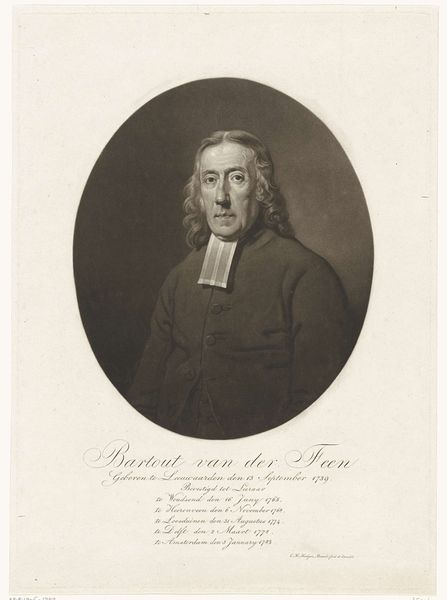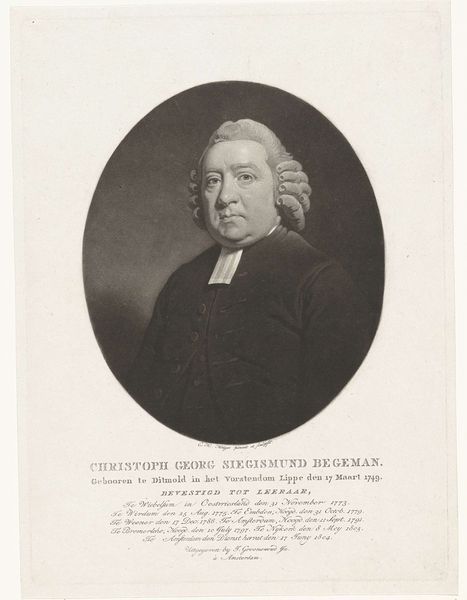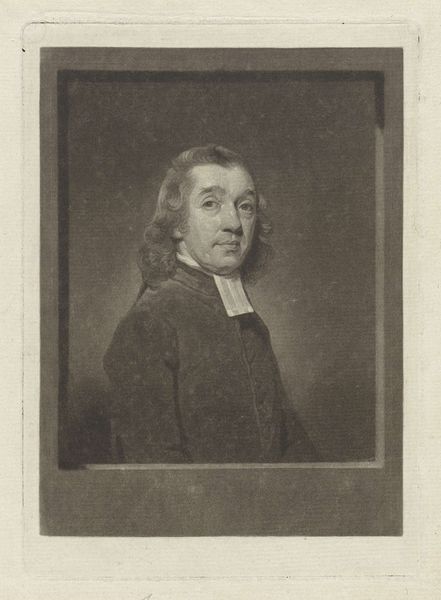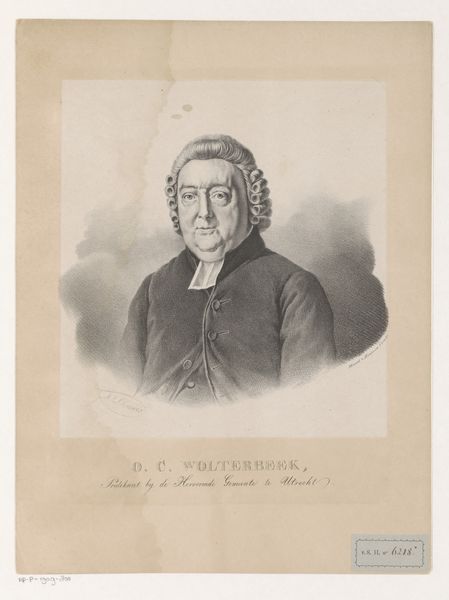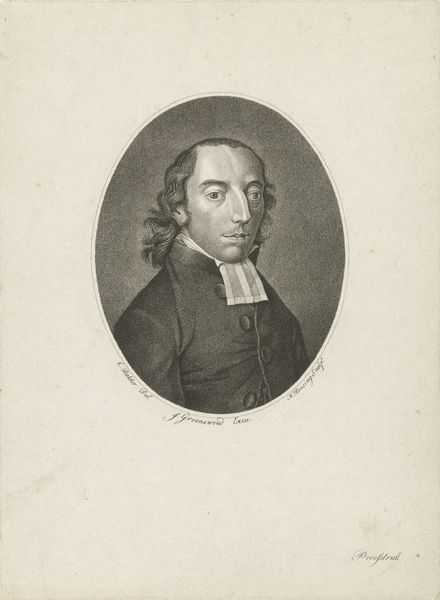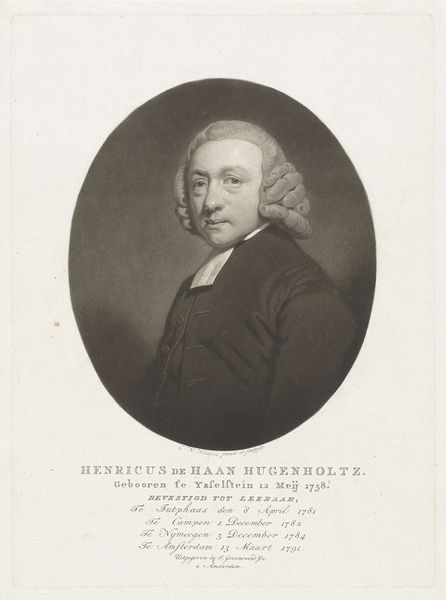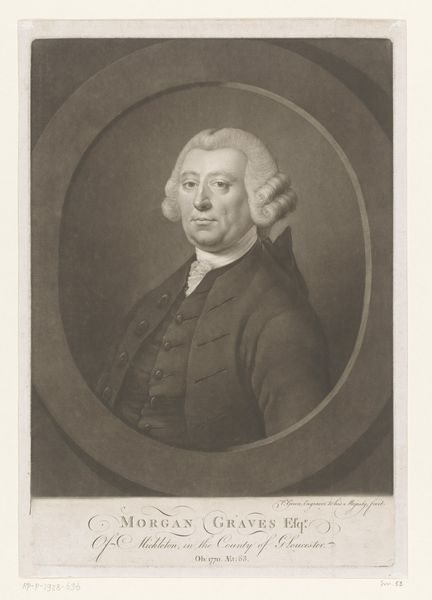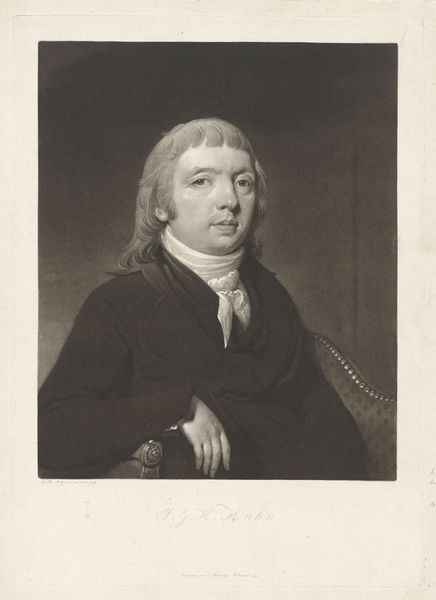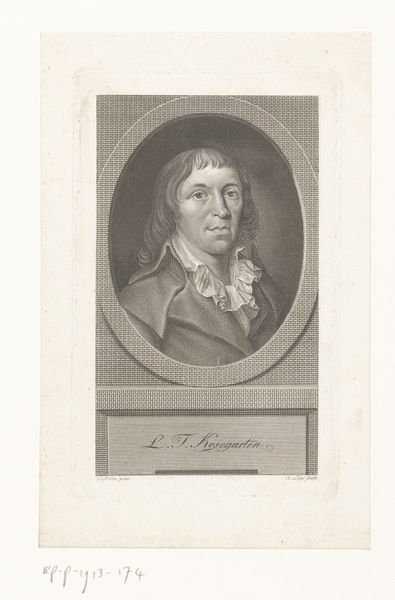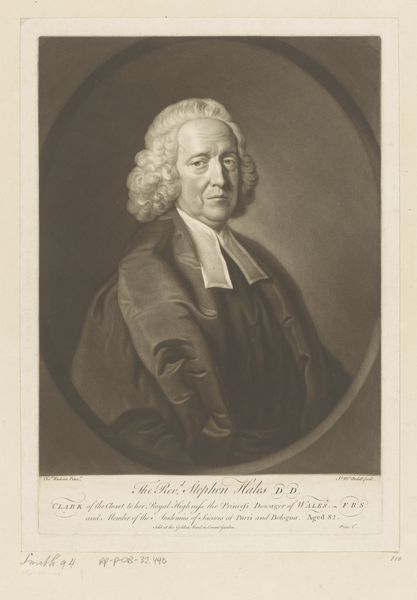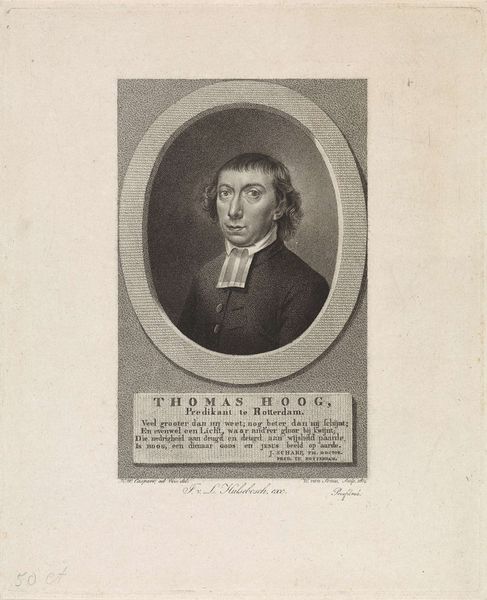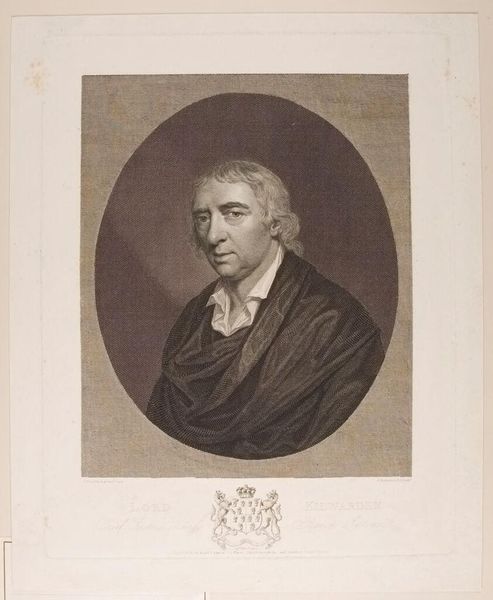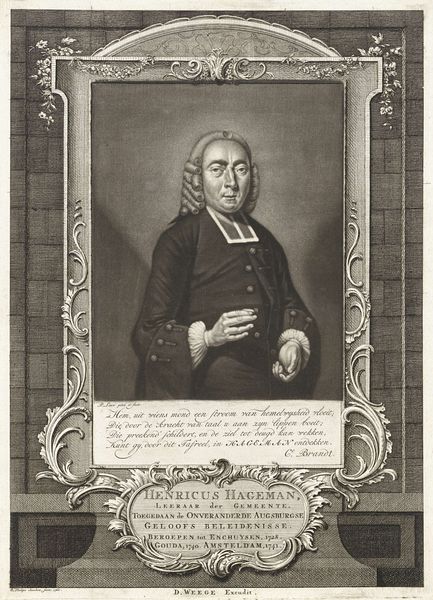
graphic-art, print, engraving
#
portrait
#
pencil drawn
#
graphic-art
#
neoclacissism
#
light pencil work
# print
#
pencil sketch
#
old engraving style
#
historical photography
#
pencil drawing
#
engraving
Dimensions: height 380 mm, width 280 mm
Copyright: Rijks Museum: Open Domain
Curator: This is a print from 1806, entitled "Portret van de predikant Bartout van der Feen" by Charles Howard Hodges, currently residing here at the Rijksmuseum. Editor: The texture is really what jumps out at me. It feels surprisingly modern, even a bit photographic in its precise gradients of light and shadow, but also ghostly because it's an engraving. Curator: Absolutely. The Neoclassical style here isn't just about aesthetics; it reflects a societal reverence for reason and order. Hodges portrays van der Feen, a preacher, with a stoic and enlightened air, characteristic of the period's intellectual elite. It mirrors the shift away from the ostentatious displays of the aristocracy towards a focus on virtue and intellect, reflecting the shifting power structures of the time. The emphasis is very much on portraying him as an enlightened leader within his community. Editor: You’re right. The restrained composition also directs our gaze straight to his face. Look at how the tight oval frames his features, every line meticulously rendered to project not just authority but also a kind of serene wisdom. Curator: Yes, it serves to almost deify van der Feen. However, let’s consider his position in society. Religious leaders then often held considerable political and social sway, so such portraiture served to reinforce his legitimacy and standing within a community grappling with new Enlightenment ideals, or pushing back against the emerging ideas. It portrays him as a pillar of stability during social flux. Editor: The balance between light and dark creates a dramatic yet subdued effect, emphasizing his presence, giving him a kind of depth—both literal and figurative. It really anchors him in our minds. Curator: These portraits were definitely tools in solidifying positions and ideas. This wasn't just art for art's sake; it was deeply intertwined with social and political power structures. I appreciate you helping consider Hodges' work through that intersectional lens. Editor: Thank you. For me, this exercise highlighted how essential it is to peel back layers to see what exactly this artwork really shows us through lines and shapes.
Comments
No comments
Be the first to comment and join the conversation on the ultimate creative platform.
